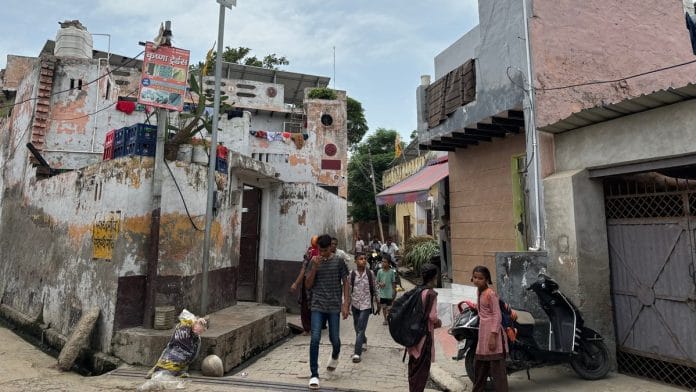Ghaziabad/Muzaffarnagar/Meerut: In Ghaziabad’s Kumhera village, a 10-year-old’s kite led to panic. Residents rushed to their doorsteps, a panchayat meeting was summoned, and even the police were called.
It happened a couple of weeks ago.
When a thin beam of red and green light cut through the night sky, dozens of villagers sprinted out of their homes, pointing upwards and yelling. “Drone! Drone!” they shouted frantically as they ran here and there. Within minutes, the light disappeared. Children then went looking for it. What they found was a kite tangled in dirt—with a broken LED strip attached to its tail.
The kite belonged to labourer Charan Singh’s 10-year-old son. The 50-year-old sighed: “He did it just for fun.” But the panchayat meeting went ahead, with police in attendance. The boy was scolded by officers and slapped by his parents.
“My child made a mistake, it was stupid. He just wanted to play, and the entire village panicked, thinking it was a drone,” Singh said.
A drone-sized fear in the sky is taking shape in rural western Uttar Pradesh these days. Night vigils have become a common practice in many villages, where every flicker of light overhead stirs paranoia in the public mind. Men patrol the fields and dusty lanes after dark, armed with axes, lathis, and even country-made firearms. They are convinced drones are being used by criminal gangs to scout homes for burglary and robbery, or for easy victims to abduct. Everyone calls them drone-chors (thieves).
Between June and early August, UP police officials said control rooms had logged at least 1,300 calls linked to drone sightings, most without any basis.

Chief Minister Yogi Adityanath has warned of invoking the Gangster Act against anyone causing “dehshat” (terror) by flying drones without permission. Even those spreading rumours or creating panic could face charges under this law, and in serious cases, the National Security Act.
When people talk about drones, they lower their voices. Very few have seen a drone themselves, but everyone knows someone who has. Some call it a ‘dron’, others ‘drond’. Newspapers like Dainik Jagran and Amar Ujala are publishing splashy headlines and using adjectives like dehshat (terror), bawal (uproar), bekaabu (out of control), and khauf (fear) in their drone-chor stories.
People here say thieves are using drones to plan robberies, maybe even to kill. Our village won’t take any chances
-Sanjeev Kumar, member of Kumhera village’s drone patrol squad
“Bulandshahr mein drone aur choro ke beech kati mahila ki choti” (In Bulandshahr, a woman’s plait cut off during a drone-thief incident), screamed one Jagran headline, noting that the alleged perpetrators might have borrowed the idea from the horror film Stree. TV channels are keeping up with the frenzy. Blood-red tickers announce, “Khul gaya drone ka raaz” (Drone mystery revealed) and “UP mein kaun uda raha hai drone” (Who is flying drones in UP). Another assured, “Drone chor ka baba karenge ilaaj” (Baba will give treatment to drone thieves)—a reference to the CM, who is popularly called “baba.”
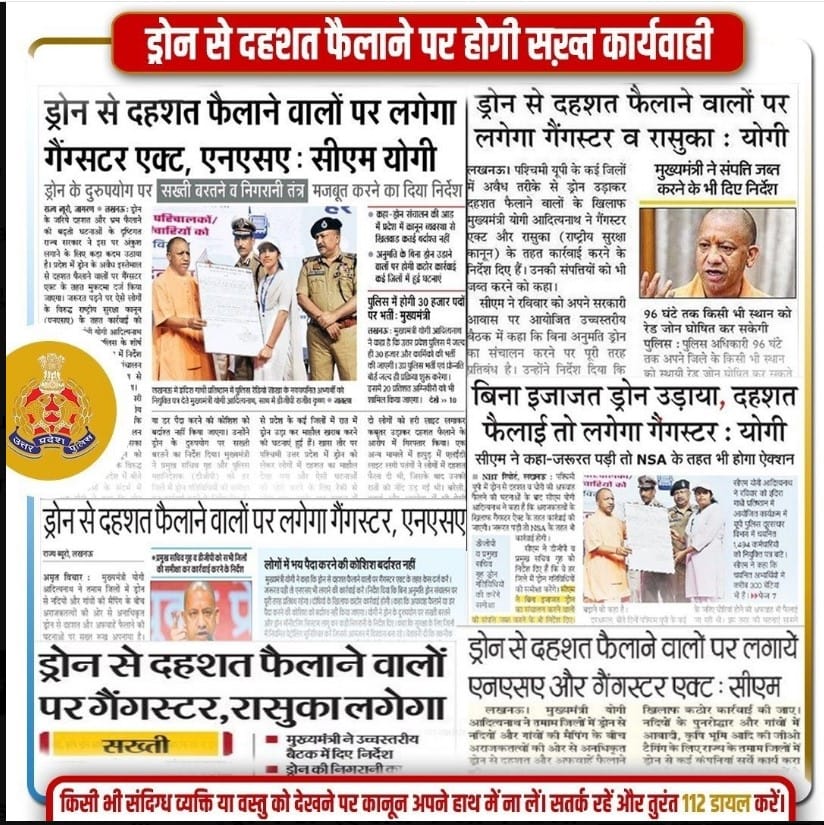
On WhatsApp and Facebook, grainy videos and low-res images of suspected drone sightings are shared like breaking news. Drones are occasionally used for aerial surveys, pesticide spraying, and even wedding videography but many are adamant they’re being flown for something more nefarious.
Police have so far said there’s no evidence of drones being used by criminal gangs.
“Aadhi haqeeqat, aadha fasana” (Half truth, half fable), is how Uttar Pradesh ADG (Law and Order) Amitabh Yash describes the entire phenomenon.
Most of the “drones” turn out to be lanterns, kites, or plastic toys. There are also cases of recreational fear-mongering. The palpable fear on the ground has echoes of Delhi’s “Kala Bandar” phenomenon or the so-called attacks by the “Muhnochwa” in eastern UP, an imaginary entity that triggered widespread panic 20 years ago.
“This fear begins when mass media gossip meets new age technology, and it is fascinating,” said social anthropologist Shiv Visvanathan, a professor at Jindal Global Law School in Sonepat. He calls the drone panic a “technical virus,” fed by exaggeration and caricature. People are familiar with drones, but gossip and tabloid news have turned them into objects of fear and fable.
“Society is changing and struggling to understand new technology, like AI. Now, science fiction is also a part of the language.”
Also Read: Profit in NY, loss in UP—what Jane Street ‘market manipulation’ did to Tier 2 & 3 India
Night vigil
In his house surrounded by green sugarcane fields in Kumhera, taxi driver Sanjeev Kumar wipes sweat from his forehead. The 45-year-old hasn’t slept properly for weeks. He has the most important job in the village these days, after all. He is the drone guard.
From 9 pm to 4 am, Kumar sits on the rooftop of his cement house with a torch and a lathi in hand. Elsewhere in the village, 10-15 men patrol the lanes, telling people: “Agar drone dikhe toh police ko turant bataye, ya hume bataye” (If you spot a drone, either inform the police or tell us).
Kumar has missed work because of drone-watch duties. Almost all the men are bleary-eyed.
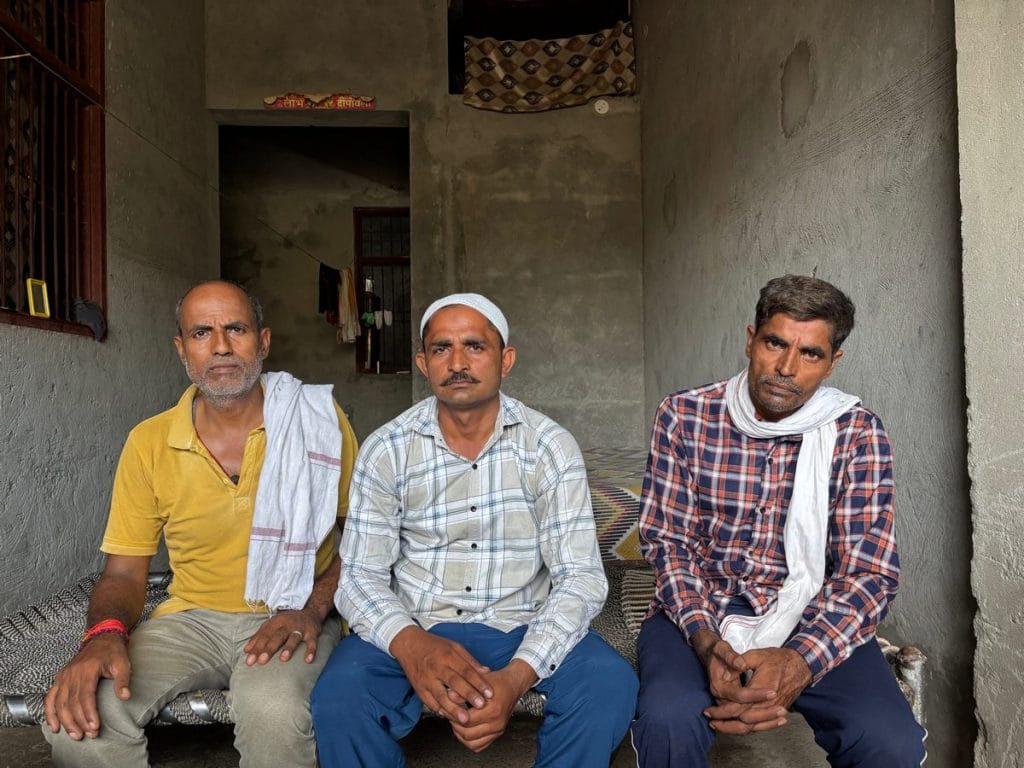
As the sun rises, they gather with tea cups, newspapers in one hand and phones in the other. Gossip travels faster than either.
Kumar, who studied up to class 8, is convinced drones are being used by criminals.
“People here say thieves are using drones to plan robberies, maybe even to kill,” he said, surrounded by neighbours swapping rumours they’ve heard from friends about the night before.
In rural imagination, drones feed into the monsoon season’s anxieties, which is usually more crime prone
-Amitabh Yash, UP Additional Director General of Police, Special Task Force
On his rickety bed, Kumar scrolls through reels on his new Android phone. Half the storage is taken up by eerie videos and images that have been forwarded to him by neighbours. He hasn’t filmed any himself. One clip shows villagers and police running around at night, shouting and raising alarms. The text on the video reads: “Thieves seen entering Kumhera village at 1 am.” The soundtrack is Punjabi singer Babbu Mann’s Pind Pehra Lagda, which roughly translates to ‘the village is under curfew’.
“Our village won’t take any chances,” Kumar insisted.
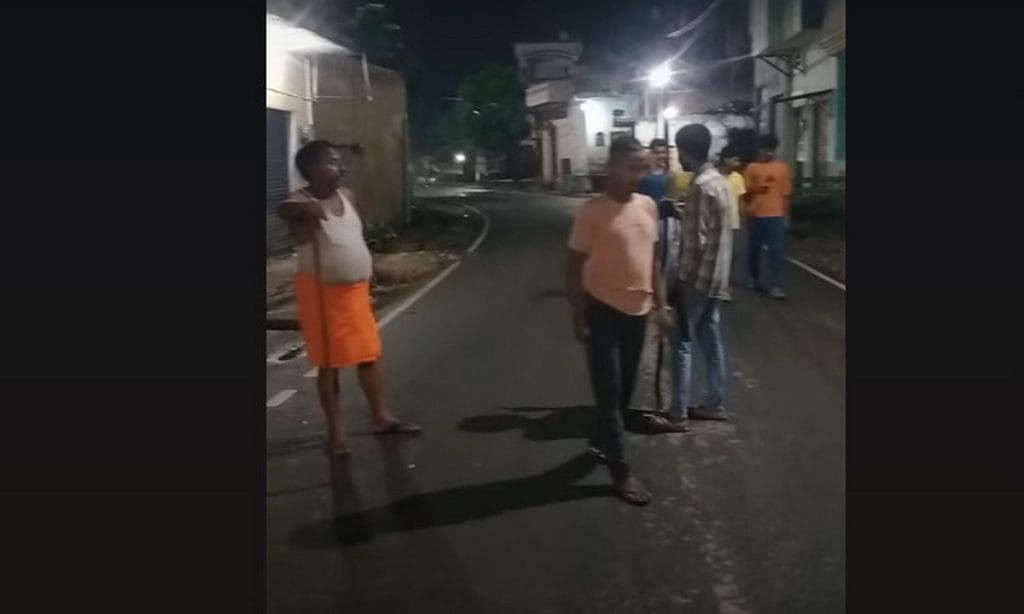
There is a strict routine in place. By 9 pm, the men finish dinner and quietly move out of their houses. At first, nobody makes noise, and they keep an eye on areas around the sugarcane fields and riverbed. By midnight, they start alerting the residents. At least one or two male members sit on rooftops, fanning themselves in the heat.
Special care is reserved for the kamzor raaste (weak entry points) in the village, from where intruders could slip in. At least two or three men are always posted at these “sensitive spots” with axes, torches, and phones charged above 90 per cent in case a call needs to be made or a video recorded of any suspicious object. Most of these spots have no streetlights. The men take turns to guard them, but nobody likes it.
“I am scared for my life when I’m there,” said Kumar’s friend Aas Mohammad. “It’s dark and damp. You can’t see anyone, only hear them when leaves crunch or the wind blows. It is the perfect hiding spot for thieves.”
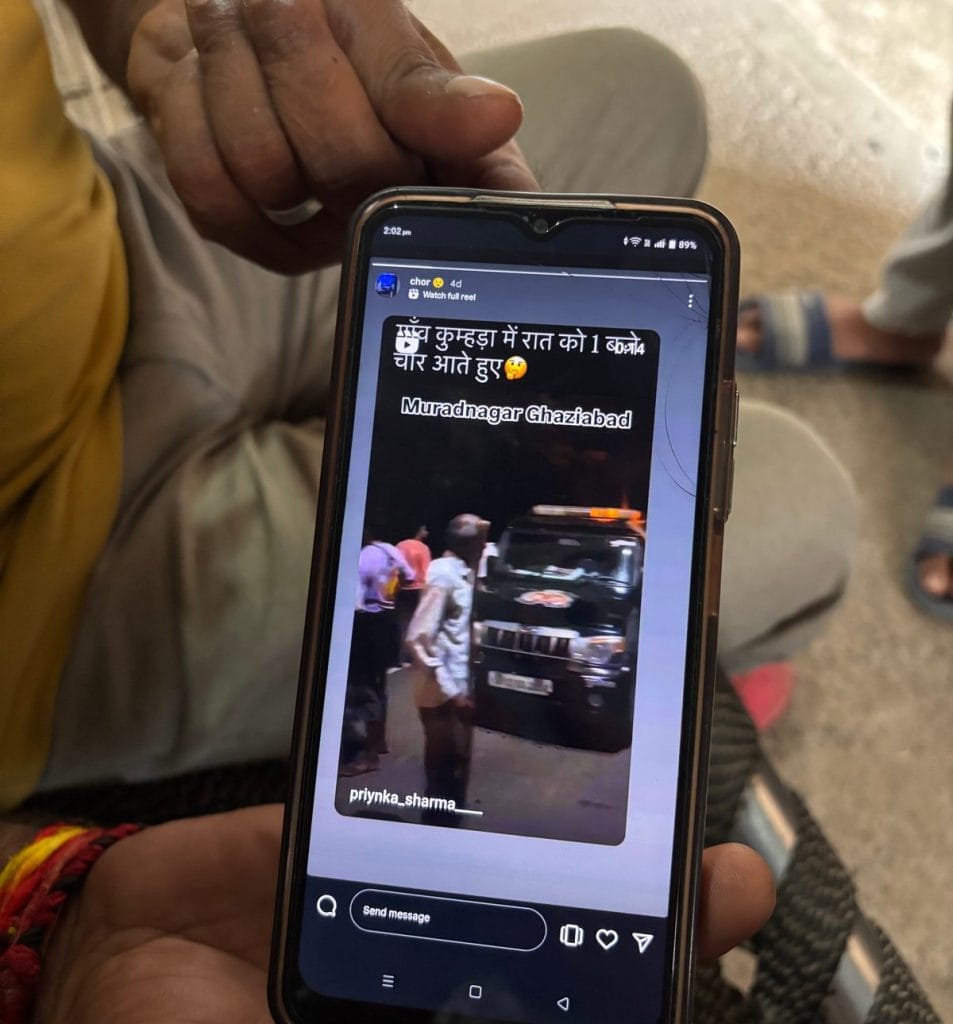
Similar night vigils are also taking place at villages in nearby districts such as Moradabad, Rampur, Sambhal, Meerut, Bijnor, Amroha, and Muzaffarnagar.
About 70 km from Kumhera is Dhanaura in Amroha, where sugarcane fields stretch endlessly. By day, they sway with the wind. By night, they become alleged hiding spots for criminals—or so goes the story across villages.
The vigilance is not confined to bylanes. It has moved online.
When he’s done with his studies for the night, Nitish Kumar, a 20-year-old MCom student, scrolls through drone-chor WhatsApp groups. He’s part of many, but points out two — “UP 23 High Alert” with nearly 900 members, and a smaller one called “Choro ka aatank” (terror of thieves) with only trusted friends.
Through the night, messages with rocket emojis, grainy photos, and shaky videos pour in. People share short videos of shadows moving behind rows of sugarcane. Some are flagged as “forwarded multiple times”. The same warning is sent repeatedly: stay alert for “drone chor”.
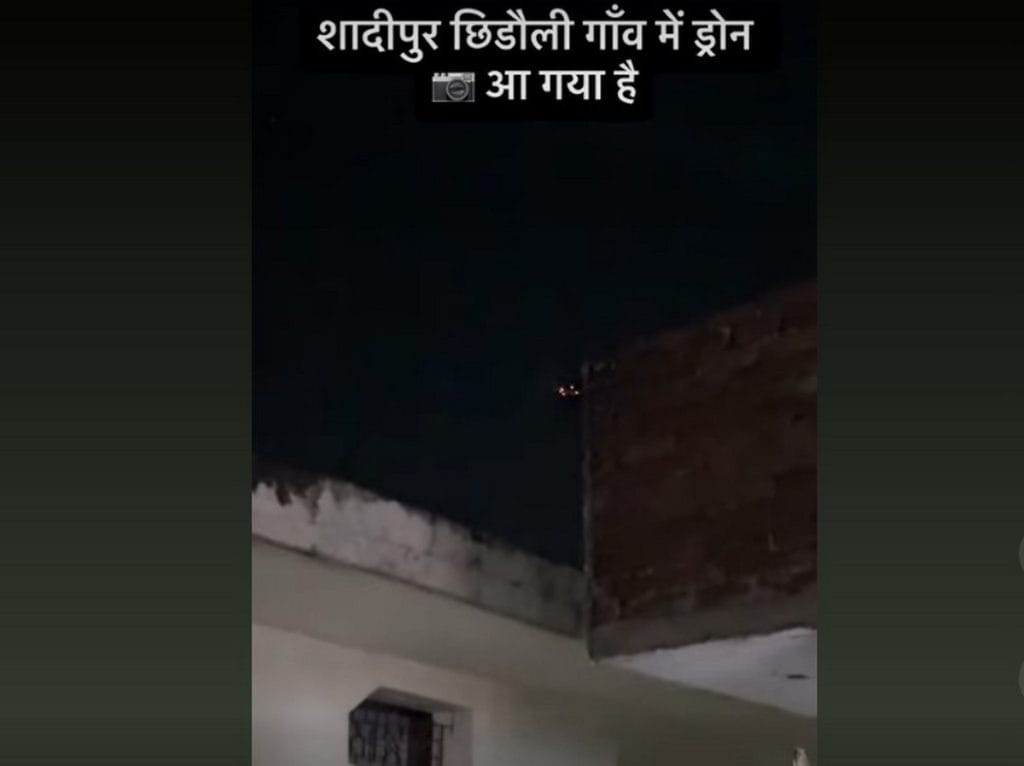
Futuristic folklore
At the heart of it all is fear of new technology. It requires the skill-sets of an educated village youth to navigate this new, seemingly unknowable world.
Nitish, who is a sceptic, claims he can tell when an image or video is fake.
“People in my village now have WiFi, everybody has a Facebook account. It’s not difficult to download a video and share it on WhatsApp to create panic,” he said.
Drones themselves are not unusual here. Police have flown them for months for river mapping in flood-prone districts or to photograph farmland. But the meanings ascribed to these machines have grown darker, according to ADG Amitabh Yash.
“In rural imagination, drones feed into the monsoon season’s anxieties, which is usually more crime prone,” Yash said. He recalled how the nomadic Bawariya gangs once struck during this season, taking advantage of low visibility and thin police presence.
Now, instead of highway robberies, rumours of “pigeons with lights” and “aerial thieves” have engulfed rural UP, he added, comparing it to the Muhnochwa legend.

Over two decades ago, panic spread in eastern UP districts like Varanasi and Chandauli over the Muhnochwa — the long-nailed “face scratcher” said to emit red and green lights before clawing people. Residents described it as hawk-like sometimes, while others claimed it looked like a cat, according to media reports from 2002. Police, however, found no proof. It was what psychiatrists call social contagion. Around the same time, Delhi had its own scare: the Kala Bandar or Monkey Man, another sharp-clawed bogeyman with a penchant for night-time attacks.
The pattern is much the same as today’s mass hysteria over the ‘drone-chor’. Except now, every “sighting” gets exponential reach and is often accompanied by images.
“Earlier, rumour travelled by word of mouth, and now it has shifted online to WhatsApp, Facebook. It’s more about seeing drone visuals on screen,” said Badri Narayan Tiwari, vice chancellor at the Tata Institute of Social Sciences (TISS).
Kya kya ud raha hai aaj kal (What all is flying these days). We can’t sleep during the day because of news and at night the people won’t let us
-A policewoman in Amroha
What’s happening now is that fact and fiction are colliding into folklore. In western UP’s sugarcane belt, drones have become essential tools. Manual spraying of crop pesticides in such farms is an arduous task, which has led to a rise in demand for drones.
“The height of the crop is directly related to the demand for drones,” said Anurag Shukla, senior general manager at Drone Destination, which works in the region. When training farmers on how to use drones, Shukla has found they are both curious and suspicious. “They ask if drones have cameras, or if they will damage the crop.”
Drones heavier than 250 grams require written approval from the administration. But those under this weight can be used at weddings and other functions without prior permission.
In smaller towns and villages, wedding drones have become a trend to capture shots of the baraat and other ceremonies. These are usually brought in by photographers from bigger cities like Noida, Ghaziabad, and Delhi.
As for agricultural drones, they can be procured through companies operating in rural UP, which also handle maintenance. A legal and fully maintained agricultural drone costs around Rs 6.5 lakh. But local vendors also assemble Chinese parts into machines costing Rs 2-3 lakh, Shukla said.
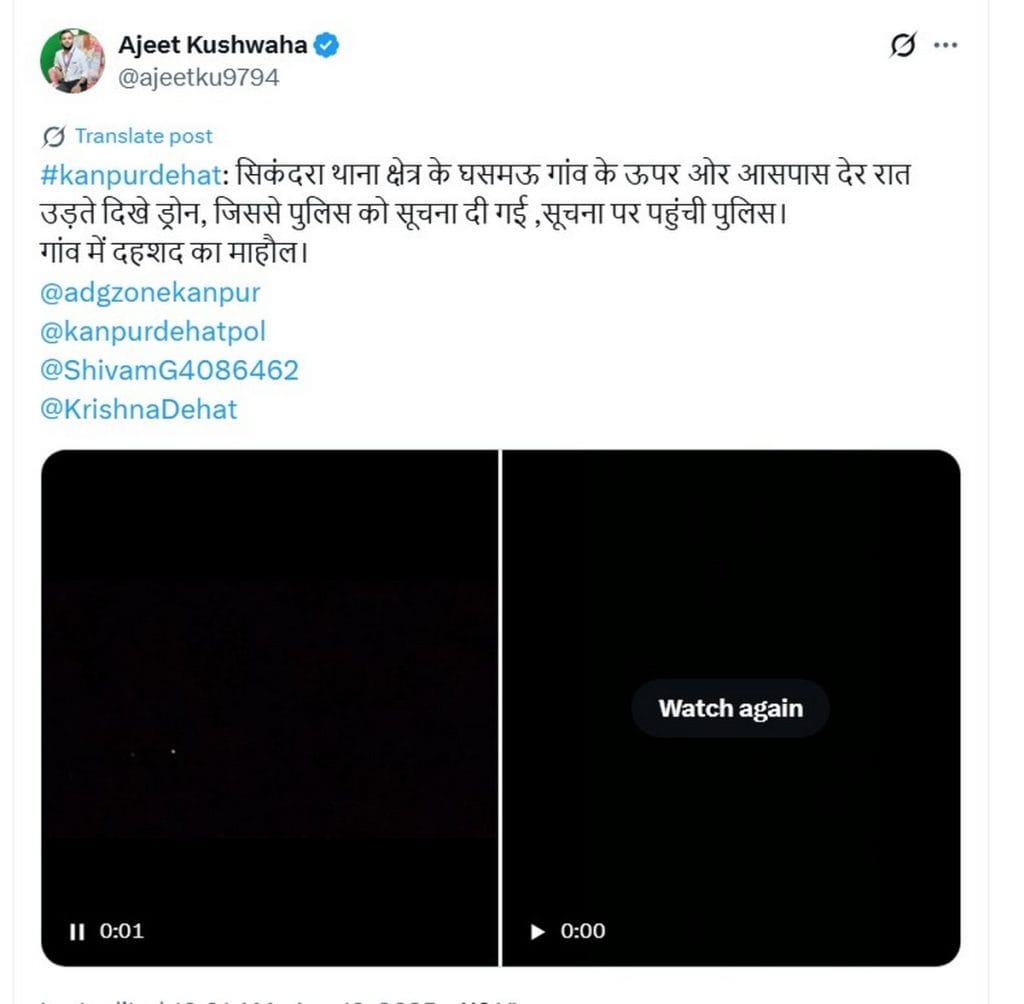
In this clamour for new farm technology, wild imagination is also taking flight. A drone, to many villagers, is something that has eyes, wings, and stealth power.
Some say they believe drones can enter homes, spy on family gold or cash, and relay information to thieves. Others suspect drones track people’s movements, especially to see when women are all alone. Some are worried they could even be used for kidnappings.
By nightfall, lights are switched on. Children, cattle, and bikes are locked inside. Iron gates and wooden doors are latched.
“Are drones hearing our conversations? Are drones watching us? Why do they only come at night?” These are some of the questions Kumar’s family members ask.
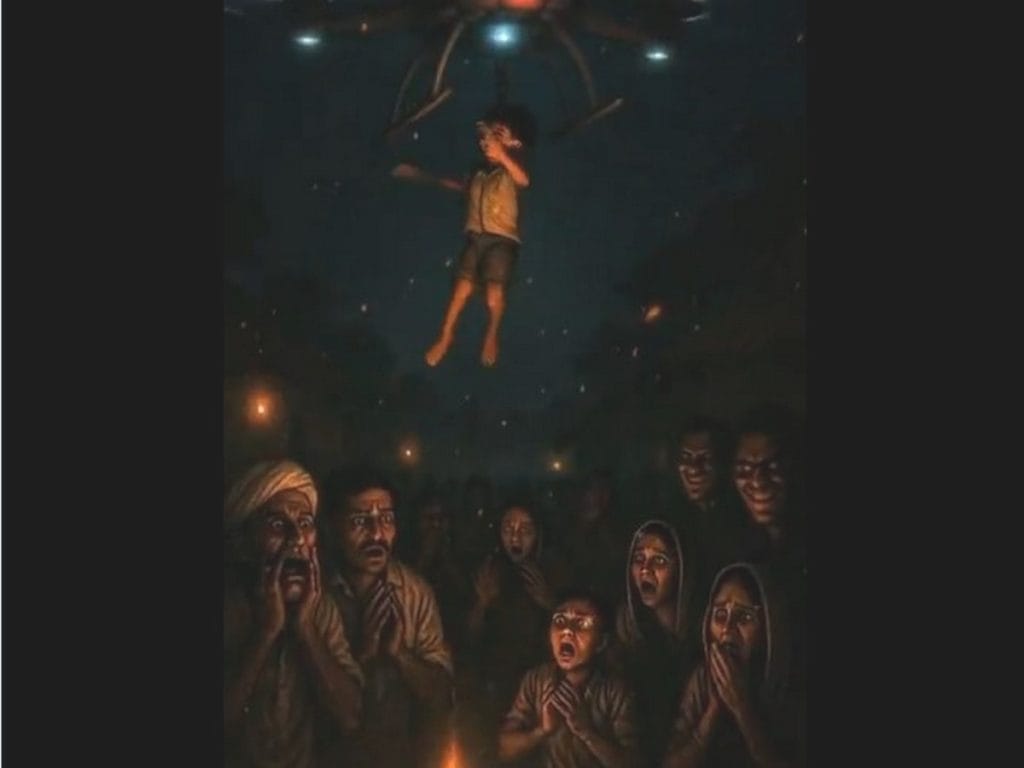
Drones, dacoits, and vigilantes
The panic began in Amroha, police say. In early June, a strange story began circulating of underwear-clad, oil-smeared thieves sneaking into villages. Shortly thereafter, in the second week of June, Amroha police arrested three members of this so-called “chaddi gang” from a mango orchard in Sultanpur, recovering gold and cash. The men allegedly pulled vegetable carts during the day to survey targets, then committed burglaries at night. Police officials said the thieves were planning to rob houses in the Naugawan Sadat area.
But villagers also insisted the thieves used drones. The police denied this, but it didn’t matter. By July, this rumour turned into a certainty for most people. This paranoia turned into violence in the district’s Akbarpur Khurd village.
I don’t know why but they even attacked my compact SUV, which was barely two years old and still on EMI. My bike and mini tractor were damaged too, and my harvested mangoes for the season were gone. It’s scary to go back to the orchard now. Nobody apologised
-Victim of drone-related vigilante attack
On the night of 24 July, Mohammad Islam sat with two labourers in the 1.25-acre swampy mango orchard he had leased for two years. Around 9 pm, Islam flicked on his torch as they began unpacking food from steel tiffins. A narrow beam cut through the darkness — and was spotted by residents in a village about 500 metres away, across a kuccha road and open fields.
Sixty men, armed with lathis, axes, and whatever they could grab, descended on the light, charged up by weeks of drone-chor rumours. Without a word, they set about beating Islam and the two labourers. The trio just about managed to escape and call the police.
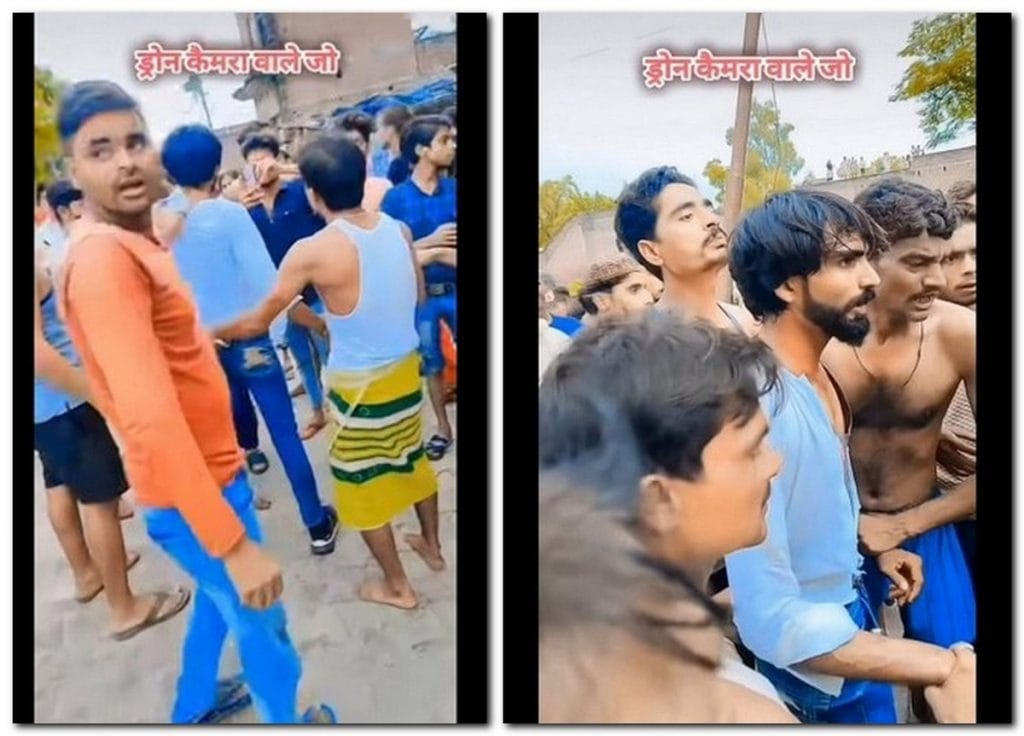
“I don’t know why but they even attacked my compact SUV, which was barely two years old and still on EMI. My bike and mini tractor were damaged too, and my harvested mangoes for the season were gone. It’s scary to go back to the orchard now. Nobody apologised,” Islam said.
Police at Bachhraon station have registered a case under multiple sections of the Bharatiya Nyaya Sanhita, including 191(2) (rioting), 191(3) (rioting armed with a deadly weapon), 118(1) (voluntarily causing grievous hurt with dangerous weapons), and 351(3) (criminal intimidation). While four out of five named accused have been arrested, 60 others remain unidentified.
We’re so afraid of drones and thieves that any rumour, any information travels faster than truth. We’re only worried for our safety
-Jitendra Yadav, accused in vigilante attack
Among those named was Jitendra Yadav, a wiry sugarcane farmer. He had been eating dinner at his home 3 km away when his phone rang. “Chor pakad lia humne,” villagers told him — we’ve caught a thief. That was enough for him to rush over to the orchard and join the mob. Others were also mobilised similarly.
Yadav claimed that by the time he reached, the crowd had already scattered.
“We’re so afraid of drones and thieves that any rumour, any information travels faster than truth. We’re only worried for our safety,” he added.
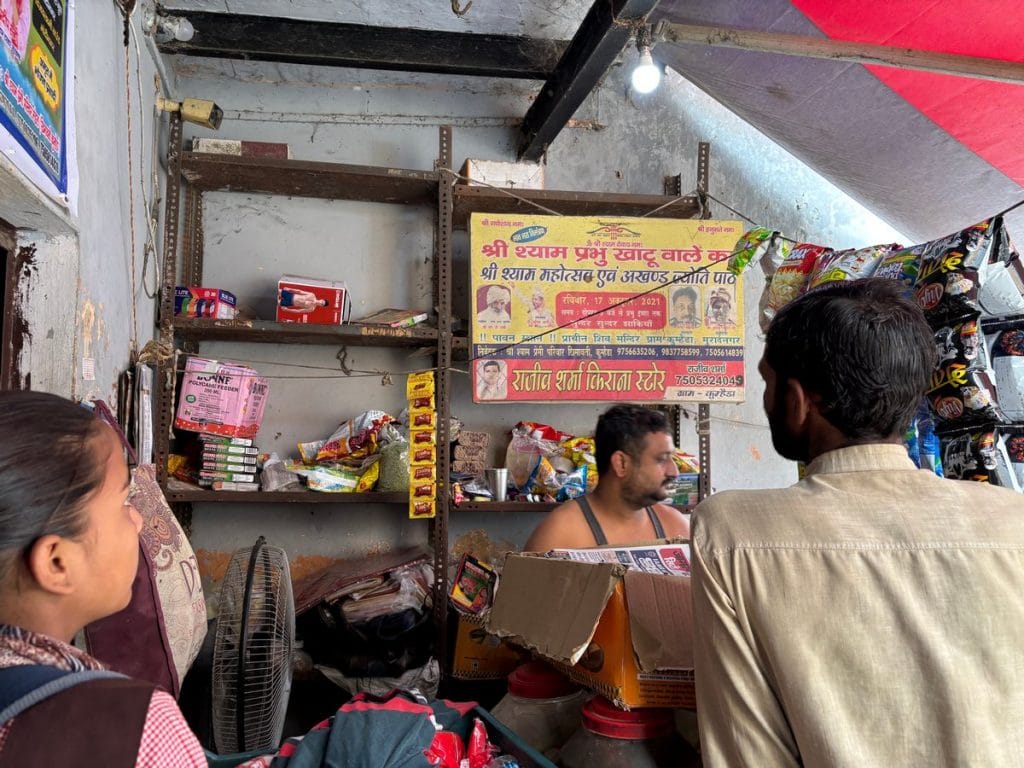
Drone-chor chaos has been reported from across the region.
In Bareilly’s Sirauli town, a man who was visiting his girlfriend at night was reportedly surrounded by local residents and beaten up on suspicion of flying a drone. Police did not recover any drone, and no FIR was registered as the matter was resolved. In another incident in the same district, a plastic toy found on the roof of a school caused alarm, leading to four men who were returning from Delhi being attacked. In Aurangabad, Bulandshahr, where drone sightings had recently been reported, a drunken passer-by was stripped and thrashed by a large mob. The outcome was even worse in Bareilly’s Bhojipura, where a beggar was beaten to death.
Earlier this month, a 31-year-old man called Pinky, said to be mentally ill, was tied to a tree and attacked with sticks and knives on suspicion of spying with a drone in Dasna, Ghaziabad. A case against 30 people was registered at Wave City Police Station.
The injured man’s relative, Bhagwat Singh, alleged in the FIR that around five months ago, his nephew Pinky left the house without informing anyone.
“We searched a lot but could not find him. Today I saw a video on social media, from Dasna, where I saw my nephew,” Bhagwat Singh said. After watching the video, he came to the spot to find Pinky.
“I tried to find out the names of the people who beat my nephew from some people who live in Dasna itself,” Bhagwat said in the FIR, adding that he too was abused and threatened.

Policing the panic
In the dusty police stations of Ghaziabad, Amroha and Moradabad, officers lean back on creaking wooden chairs, eyes fixed on social media feeds for the latest drone-chor developments.
“Kya kya ud raha hai aaj kal (What all is flying these days). We can’t sleep during the day because of news and at night the people won’t let us,” said a policewoman at Bachhraon police station in Amroha, only half-joking.
The big headache, she added, isn’t drones but the “anti-social elements” in the villages, who are whipping up panic and rumour.
Not just beat cops, now entire station staff members do night patrols across neighbouring villages. No matter the nature of a PCR call, a team is dispatched to the spot.
“The security needs to be taken seriously. The stories, well…” the policewoman said, laughing.
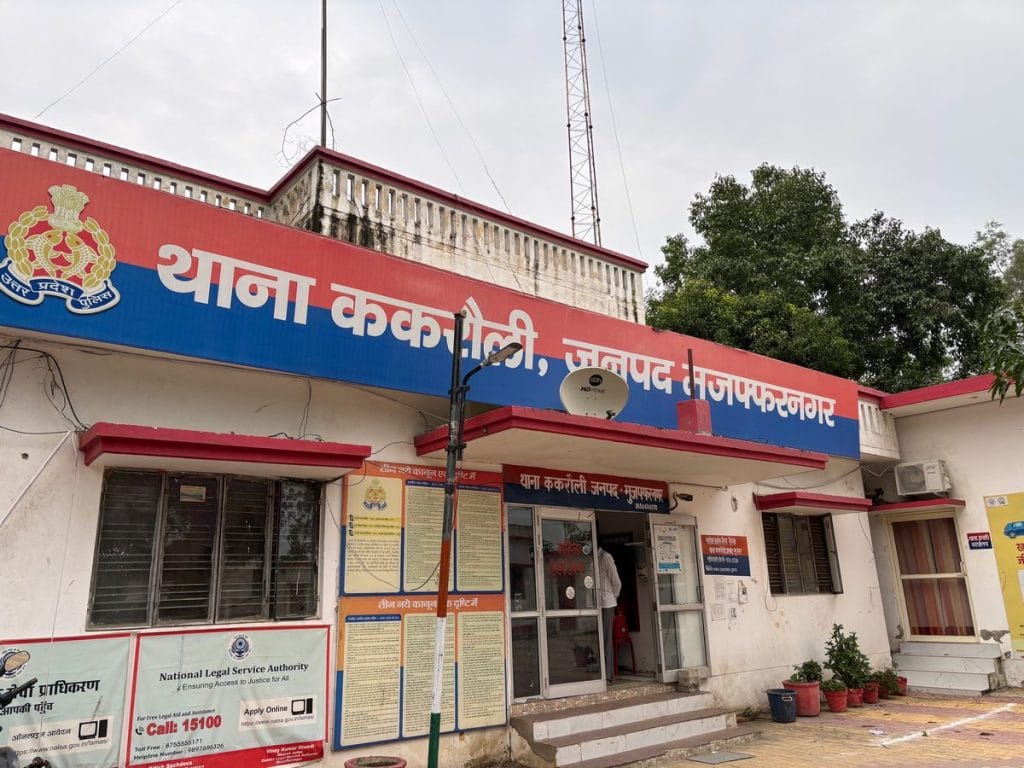
Drones are getting just about anyone in trouble with the police, whether it’s those flying them or those giving wing to rumours.
The Adityanath government has asked senior officials to increase ground presence and ensure all violators are punished. Unauthorised use of UAVs has been banned in several districts through July and August.
In Amroha, three intrepid reel-makers were not just beaten by a mob but detained by police for flying drones without permission. They were booked under Section 170 of the Bharatiya Nagarik Suraksha Sanhita (BNSS), which gives police the power to arrest people to prevent them from committing a cognisable offence.
Fearmongers are also facing heat. In Meerut, at least eight people have been arrested and 15 FIRs filed over spreading fake news about drone sightings.
Police action has also caused tension with residents. On 10 August, police in Ghaziabad’s Modinagar rounded up young men who were keeping drone vigil, only for angry residents to blockade the road in front of the station; this was later chalked up to a “misunderstanding”.
It’s a delicate balance between taking the drone ‘threat’ seriously while containing mass hysteria as well.
UP Police have launched night vigils from 11 pm to 3-4 am. Village heads and police are coordinating on two fronts—backup for homegrown patrol groups with PCR vans and police gear, plus help to maintain calm and prevent mobs from forming.
The drone-chor brouhaha has also cast a cloud over the state’s own use of drones for scanning and surveillance. UP Police have used UAVs to monitor Friday prayers in communally sensitive areas, manage crowds during the Maha Kumbh, assess flood levels near the Ganga, and track the Kanwar Yatra. The same technology that the police has hailed as a citizen safety tool is now sparking suspicion, which complicates its use.
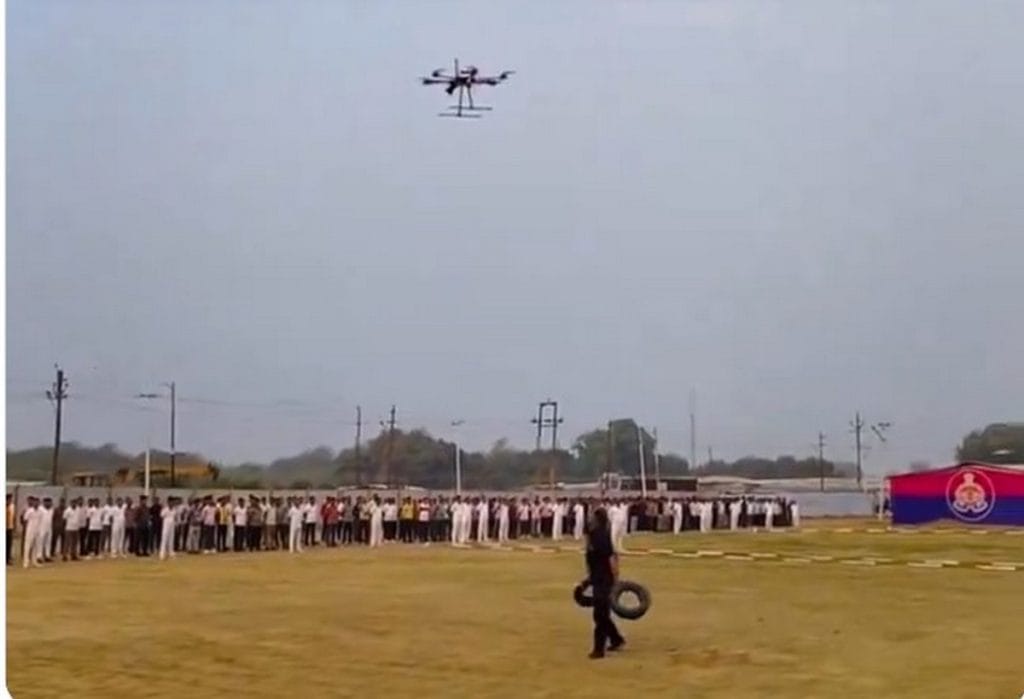
A senior police officer in Lucknow told ThePrint patrolling will be conducted 24 hours in areas affected by rumours. Registration of drones and drone pilots is mandatory.
“We will ensure proper action as per the provisions contained in the Drone Operation Security Policy-2023, and if any agency is to conduct an aerial survey, they must first inform the local police station,” he said.
District control rooms have been instructed to identify unauthorised drones and take legal action. Each police station must now maintain a register listing drone registration numbers, along with details of drone mechanics.
But the clampdown is now extending to just about anything that resembles a drone. Even birds are not exempt.
‘It’s a bird, it’s a drone…’
Two streaks of red and green light flitted across the sky late one night in Jatwara village of Jansath block in Muzaffarnagar. The residents, who usually have one eye skyward, immediately got into a flap. The police were alerted and the hunt began.
On 30 July, past midnight, police came knocking at the iron gate of a small house in a bylane of Jatwara. They asked to speak to Shoib, a lean 20-year-old who works at a mobile repair shop, fixing cracked screens and replacing SIMs.
“Do you keep pigeons?” they asked. Kabootarbaazi (pigeon racing) is common in the area and Shoib kept a few birds in his terrace. And in a flash, he and his alleged accomplice Sakib were catapulted into local notoriety, and into the confines of Muzaffarnagar jail.
“During the investigation, the police recovered two pigeons, a cage, and red and green LED lights from the accused. They confessed to tying the lights to the pigeons’ legs and releasing them at night so that the people assumed that they were seeing drones from a distance,” Senior Superintendent of Police (SSP) Sanjay Kumar told reporters.
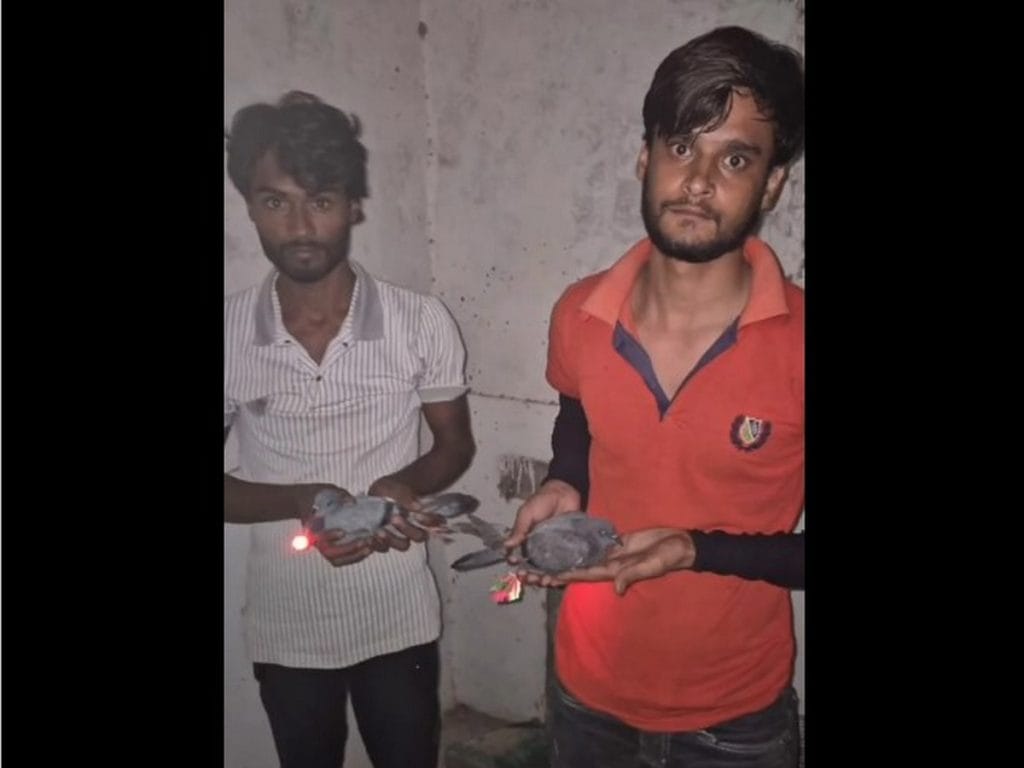
A case was registered at Kakrauli police station. Police called in the press. Shoib, Sakib, the two pigeons, the LED lights, all in the same frame. The two held one pigeon each. The SSP announced a reward of Rs 20,000 to the team that cracked the case.
Within hours, the two men’s faces were everywhere: WhatsApp forwards, Instagram posts, Facebook thumbnails. Meme pages had a field day with captions like “Kabootar pe red light” and “Red-green light mystery solved”. Some, however, criticised the arrests. “Can’t arrest a rapist, but you can arrest them?” read one comment on Instagram.
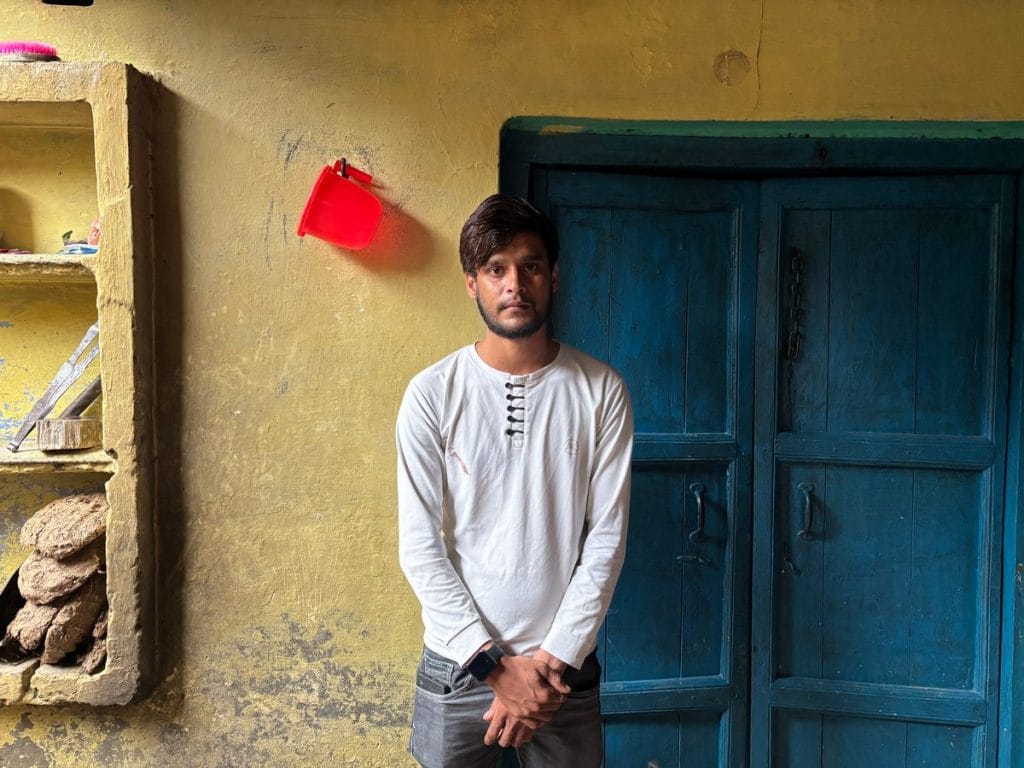
The usual headlines followed in local dailies: UP mein drone ki saazish ka pardafash (Drone conspiracy exposed in UP), Chaukane waale raaz aaye samne (Shocking secrets revealed).
Shoib, now out on bail, is reeling from it all. He’s lost his job and can’t provide for his family of six. In Jatwara, people now call him “drone wala ladka” (drone boy). He refuses to leave his home, unable to bear the taunts and teasing. He insists he only kept white pigeons—not grey—and was sleeping when the police came.
His family members try to console him. “You’ll move forward in life,” said one well-meaning relative. But Shoib shook his head: “Arrey ek kabootar ke chakkar mein meri puri life ud gayi”—one pigeon and my whole life flew away with it.
(Edited by Asavari Singh)



